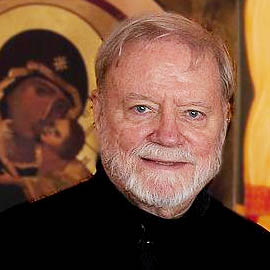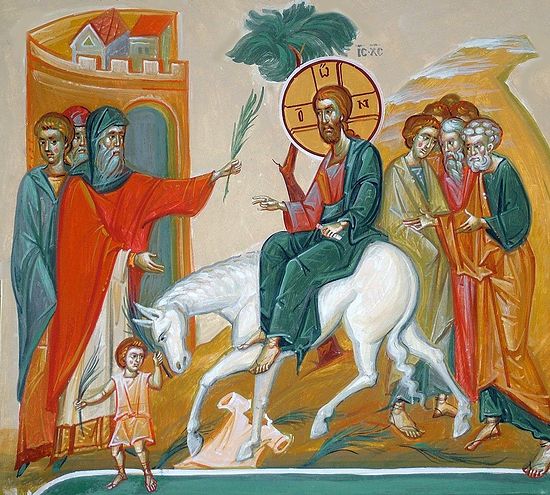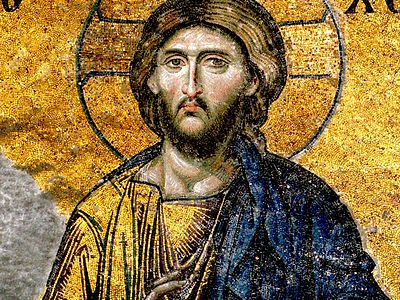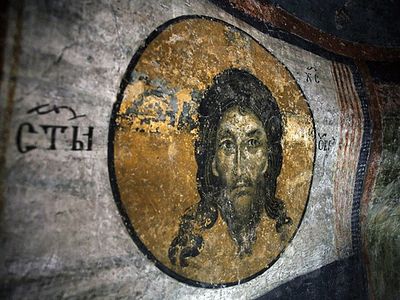Communion & Division – The Structure of Knowledge: Introduction
 Rev. Patrick H. Reardon
Rev. Patrick H. Reardon
In investigating the empirical aspect of God’s sending forth of his Son, we can hardly do better than to start with the Johannine literature. This theme’s most graphic text is found at the beginning of the First Epistle of John:
That which was from the beginning, which we have heard, which we have seen with our eyes, which we have looked upon, and our hands have handled, concerning the Word of life—the life was manifested, and we have seen, and bear witness, and declare to you that eternal life which was with the Father and was manifested to us—that which we have seen and heard we declare to you. . . . (1:1–3).
In this passage we are impressed by the sustained repetition of verbs expressing the sense experience of the Incarnation: heard, seen, looked upon, handled, manifested, seen, manifested, seen, heard. Later in the same epistle John proclaims, “And we have seen and testify that the Father has sent the Son as Savior of the world” (4:14).
This sensual dimension of the Incarnation is likewise characteristic of the Johannine Gospel. Thus, the Lord says to the Samaritan woman, “I who speak to you am he” (4:26). And to the man healed of his blindness, “You have both seen him, and it is he who is speaking with you” (9:37). And to the citizens of Jerusalem, “ He who sees me sees him who sent me” (12:45). And to the apostle, “Have I been with you so long, and you have not known me, Philip? He who has seen me has seen the Father” (14:9). All these lines illustrate the principle stated early in the Gospel of John: “No man hasseen God at any time. The only-begotten God (monogenes Theos), who is in the bosom of the Father, he has explained him (ekeinos exsegesato)” (1:18).
Thus, in his incarnate Person, the Son is the living exegesis of the Father. The Lord must tell his enemies, “You know neither me nor my Father. If you had known me, you would have known my Father also” (8:19). So much is this the case, that no man has access to the Father except through the Son. On the other hand, God does not have, nor has God ever had, any relationship to this world except through his Son. Even in Creation, “all things were made through him, and without him nothing was made that was made” (1:3).
This Johannine accent on the empirical experience of the Father’s revelation in his Son justifies our speaking of the Incarnation as the divine entrance into the historical, categorical order. Theologically we may describe it as God’s unanswerable vindication of man’s empirical faculties that operate within the classical categories of where, when, quantity, quality, and so forth. Specifically, John’s emphasis on the visual, the auditory, and the tactile prompts us to speak of God’s fleshly intrusion into space.
When we speak of the historical, categorical order, however, we must regard more than the senses operating in space. We must also consider the memory operating within time. Those who saw the Son, heard him, and touched him did so, not only within the limiting confines of human space, but also in the living context of human time.
The Son did not reveal the Father to just anyone, after all. He made his revelation to the Jews, who had been especially prepared, during many centuries, for precisely that revelation. It was God’s historical, categorical revelation in his Son that brought that historical pedagogy of Israel to its defining fulfillment. According to the opening words of the Epistle to the Hebrews, the defining truth of that history is the truth revealed in the Son “in the last of these days”—“ep’ eschatou ton hemeron touton”—“God, who at sundry times and in divers manners, spoke in times past to our fathers through the prophets, has in the last of these days, spoken to us by a Son, whom he has appointed heir of everything.” God’s revelation in his Son is inseparable from time, the experience of before and after, of tense and becoming.
The Synoptic Gospels contain a dominical parable that stands in striking parallel to this opening verse of the Epistle to the Hebrews. I cite it in the Gospel of Mark, where the Lord describes God’s activity in Old Testament history as that of a man sending his servants to the keepers of his vineyard, so that they might hand over the fruit of the vineyard. “Last of all,” says the text, “He sent his beloved Son”—“huion agapeton . . . apesteilen auton eschaton.” This Son is recognized, even by the wicked vine-keepers, to be the “Heir”(12:6f), the same word used in the foregoing passage from Hebrews. In both of these texts, history is interpreted solely with respect to eschatology, and eschatology is defined by God’s revelation in his Son.
In summary, in the revelation in his Son, God transforms the knowability of the empirical, historical, categorical order, and all of God’s speaking in history is determined by, and to be interpreted with reference to, his revelation in the Son. From the very first time that he uttered a human word, God started to become incarnate. By speaking this word in history, God transforms the knowable structure and content of history.
Patrick Henry Reardon is pastor of All Saints Antiochian Orthodox Church in Chicago, Illinois. He is the author of Christ in the Psalms, Christ in His Saints, and The Trial of Job (all from Conciliar Press). He is a senior editor of Touchstone.




